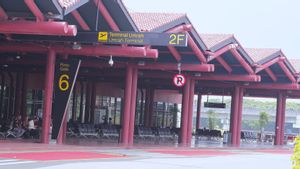JAKARTA - Currently, Wi-Fi network connectivity needs to be met. Especially during the COVID-19 pandemic, we are required to continue to carry out all activities, including office affairs and studying from home. But what happens if your Wi-Fi has problems?
Don't worry, now there are many easy ways you can do yourself to fix your problematic Wi-Fi at home, without the need to call for service. Here are some easy tips and tricks to fix it from Kaspersky, Saturday, September 26.
1. Initial Problem AnalysisYou need to identify the specific cause of the problem. Is it really the Wi-Fi signal that has the problem? Or maybe something else, like your ISP's slow connection speed?
Get started with speed checkers by going to a speed test site like Speedtest.net or nPerf.com. If you get good data transmission speeds near the router, but bad elsewhere, then it's time to find another position on your router.
2. Do the First ExperimentNext, try experimenting with the position of the router and the angles of its antennae to increase the range. This is the simplest method, requiring no extra time, money or special skills.
For example, if your router is located in a cabinet, especially one made of metal, try moving it elsewhere. Metal isn't Wi-Fi's best friend, and neither is reinforced concrete.
Keep in mind, the best position for the router antenna is an upright position. That way, your Wi-Fi router will get the best horizontal coverage. Also check to see if anything is blocking. The refrigerator, for example, is the enemy of radio waves.
3. Configure ChannelsOn reboot or at the scheduled time, the router selects the channel that is most free from interference. This is comparable to the way the navigation system chooses the route with the least congestion.
Routers usually handle the task themselves fairly well, but it's possible to be given intervention. For example, you can configure your router to automatically search for clogged channels more often, or even set it up manually.
But be careful when doing the latter, spectrum congestion can be arbitrary, because not only your router, but the neighboring routers are also constantly and automatically switching channels. Some routers also allow users to change the Wi-Fi signal strength. Check the router settings to see if it is set to the maximum value or not.
4. Use Cables
Using a wired connection can provide two main benefits, such as solving problems in a room where Wi-Fi is difficult. Furthermore, if you transfer at least a few devices to the cable, the quality of the wireless connection on the other devices is likely to improve.
Sure, you can't connect your smartphone or tablet this way, but you can to a desktop computer or a smart TV. If the cables that run around your house are an eyesore and there's no easy way to hide them, try a power line adapter that transmits network signals through your home's power cord.
Unfortunately, it has a downside, power line equipment can become unpredictable at times and sometimes refuses to co-exist with local power lines, which is an important point to note.
5. Bandwidth control
You can limit apps and sites that suck up Wi-Fi arbitrarily by using Quality of Service (Qos). From that site, determine the priority of applications that can and cannot suck up bandwidth.
6. Use a WiFi booster, repeater, or extender.This will be an option if your Wi-Fi network is unstable or slow. It is known, WiFi booster, repeater, and extender are devices that extend WiFi coverage by replaying WiFi signals at home. Although they work differently, all three have the same function.
The English, Chinese, Japanese, Arabic, and French versions are automatically generated by the AI. So there may still be inaccuracies in translating, please always see Indonesian as our main language. (system supported by DigitalSiber.id)













